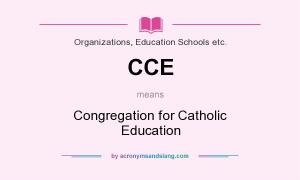Responding to ‘Male and Female He Created Them’ – Part 3

The Vatican Congregation for Catholic Education “listens” to gender theorists. It does so without quoting any of them but only quoting Church documents. It seems to be hearing only the most radical of gender theorists. That makes it harder to find areas of agreement and easier to criticize. In “Male and Female He Created Them” the Congregation does find things to agree with and to criticize. The agreements are less substantial than they could have been if real listening to gender theorists had taken place. I find myself agreeing with the criticisms but not convinced that they actually target the experiences people actually have. In other words, most people with gender issues are far from being radical gender theorists.
Points of agreement
The Congregation praises some of the writing of gender theorists, especially how they combat discrimination. The Church has had its failings in this area, the document admits. The Church has hidden a “masculinist mentality” behind its religion. (Par 15)
Children need education in respect for “every person in their particularity and difference.” No one should
… suffer bullying, violence, insults or unjust discrimination based on their specific characteristics (such as special needs, race, religion, sexual tendencies, etc.).
I think that means gays and lesbians and any other sexual minorities deserve respect as persons. The authors also mandate treating “all legitimate expressions of human personhood with respect.” (Par 16) Now they seem to have switched from respecting all persons to respecting expressions but only “legitimate” ones. The writing is not clear.
Finally, the Congregation tries to find agreement on the “values of femininity” without using the word “feminism.” In this case I’m not sure it really is agreement. They identify a “positive development in anthropological understanding.” That almost seems like a nod to feminism. But the feminine values they find are not what I would call feminist. They write of women’s “capacity for the other” and “respect for what is concrete.” Opposed to that are “abstractions which are so often fatal.” Women’s contribution “enriches human relationships.” We are in debt to the many women teachers, nurses, social workers, etc. (Par 17)
I can imagine that feminists would honor women’s contributions in all of these areas. But why be so limited? Surely we can also agree that women make contributions in technology and science, as leaders in the business world, as politicians, as truck drivers and, perhaps especially, as theologians. Could it be the Congregation’s own gender theory that prevented them from saying that?
Critique of radical gender theorists
“Male and Female He Created Them” directs its points of criticism at gender theory “especially in its most radical forms.” More accurately, they might have said “only” or “almost entirely” the most radical gender theorists. At any rate, here with this limited target, the document makes some telling points. “Nature” and “body” are themes that echo powerfully in the modern mind. They are themes that support the case for sex as a fundamental constituent of the person.
Gender theorists, even in its moderate forms, the Congregation says (but I’m not so sure), make gender to be more important than sex. Underlying this theory is a dualism of soul and body. Matter and spirit are separate realities. Matter follows its mechanical laws, and spirit follows or makes up its own completely independent laws. Such an independent spirit can sometimes decide that it is in the wrong body.
Here the document’s argument is strong and even in tune with modern philosophy and psychology. The human person is a unified whole, not a material and a spiritual part existing uneasily together. I see this fact in the way children’s minds and personalities develop. Physical touch is important. Children learn to think by physically manipulating real things. Certain mental stages depend on previous physical developments. The Church, which values spiritual things highly, says we are not our souls but a whole physical-material complex. This is not to say that the “wrong body” phenomenon never happens, but there’s something odd about it.
Sexual complementarity
“Male and Female He Created Them” is on solid ground also when it speaks of complementarity between the sexes. It’s not just a matter of procreation. It’s possible to imagine a world which loosens or even abandons the connection between the physical, sexual union and procreation. Perhaps then all forms of sexual intimacy would be equal. But something more than the connection between sex and procreation would be lost. The Congregation makes a fair attempt at explaining, through theology and psychology, in what that lost would consist.
Theologically, the human body incorporates elements of the material world and adds the element of human freedom to the world’s natural praises of the Creator. (Par 23) Philosophically and psychologically, personal identity depends on encounter with the other. (Par 27) Many modern thinkers agree with the Congregation on this point. They have discovered, or rediscovered, the relationship between personal identity and experience of otherness. If human bodies mean anything, the visible, sexual form of that otherness must be of fundamental significance.
The world we live in
The congregation has good reason to object in a world where all consensual, non-exploitative forms of sexual activity are deemed equal. Such a world operates without due respect for the sexuality that nature gives. As if nothing is given, all is construct, and there are no standards for judging the worth of constructs. That world envisioned by radical gender theorists doesn’t exist. The Congregation seems to think that it is around the corner, anyway.
Their document speaks of the dominance of will over nature. We certainly see that in some areas, particularly our distorted, nature threatening economy, I don’t believe it’s the case with transgender people, though. I don’t believe the Congregation is right to call non-standard sexual identity or orientation a choice. It’s not a matter of a dominating will. Probably biological inheritance, social conditioning, and chance all play roles that no one quite understands. Still, nature is real and does give us ways of living, or a range of ways, that too many people hesitate to call normal.
A way forward through respect and dialogue
It’s still possible to look for the good in ways that take some of us outside that normal range. We can go beyond respecting the person and eliminating bullying and discrimination. We can notice, for example, that a gay or lesbian person who wants to marry a person of the same sex is standing up for marriage. When many avoid the permanent commitment of marriage, we should welcome that affirmation from an unexpected quarter. With that beginning, a dialogue could ensue concerning how to respect differences while keeping in central place the relationship of man and woman.
A similar dialogue could take place with transgender people, if not with the most radical transgender theorists. We can first honor the often traumatic introspection process that leads a person to identify as transgender. Self-examination is hard for anybody and a valuable thing that most tend to avoid. Having recognized that sex has a subjective existence, the dialogue could switch to the objective side: Can transgender as well as cisgender people recognize a societal preference for cisgender, i.e., given body and perceived sexuality in alignment? If so, what reasons could we give? If there are 50 different sexes, can all sides agree to give central place to the two that nature gives us. Can we all uphold the complementarity of woman and man? If so, how?
Like all dialogues, these would be conversations begun without knowing what the final proposals would be. Both sides might have to change. There’s no genuine dialogue without that risk.
The Congregation for Catholic Education did not want to take that risk. They were writing to Catholic educators. Dialogue is a long process, and they saw their mission as helping educators now. Commendably, they do call for dialogue. To that call the Church should respond.
Image credit: Evangelicals for Social Action via Google Images











